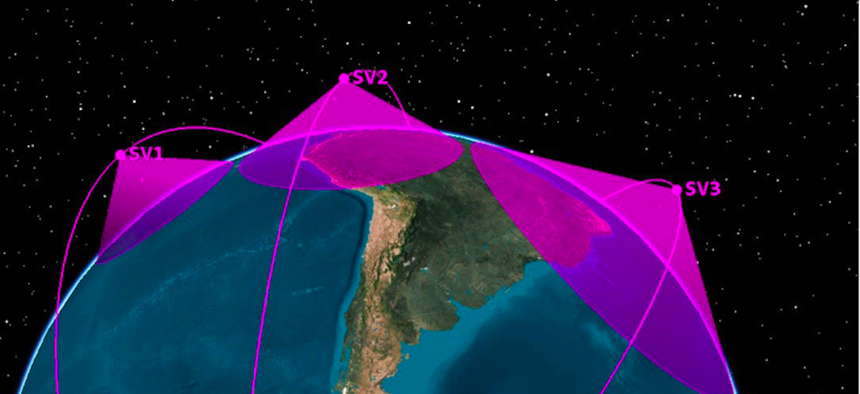PATRICK TUCKER

Lots of cheap satellites in low-Earth orbit may not be enough to protect against Chinese and Russian hypersonic weapons, so the U.S. should broaden its missile-defense strategy by adding a variety of sensors—including drones, aircraft, and higher-orbit satellites, according to a new report from CSIS.
Despite the Pentagon's launch of several constellations in recent years, today's highly maneuverable hypersonics remain very difficult to track, especially across large bodies of water such as the South China Sea, one of the report’s authors said Monday.
“This problem is so challenging in part because hypersonic weapons are sub-pixel-size targets. They're smaller than the pixels used to actually image them, and so their signatures get diluted with all their surroundings. It's akin to trying to find a cup of tea that you've dropped into a swimming pool and figure out how hot it is,” Masao Dahlgren said at a CSIS event in Washington, D.C. “We don't get dense coverage near the equator. We get it near the poles.”
Additionally, putting too many satellites in low-earth orbit means increased risk of space debris.
“In the past year, the amount of collision-avoidance maneuvers that needed to happen with the Starlink constellation were an order of magnitude greater than they were in the past five years combined,” Dahlgren said.
Cheap low-earth orbit satellites are also vulnerable to a radiation field created by a nuclear test, which means an adversary could knock out the Pentagon’s sensing ability with a single test, he said.
Dahlgren said some of those coverage gaps could be resolved by adding just eight more satellites in the middle-Earth orbit altitude, 1,243 to 22,300 miles up.
The Space Development Agency is always looking for ways to overcome coverage gaps, even as it continues to field more satellites in LEO, said Col. Alexander Rasmussen, the agency’s chief of the tracking layer.
“We're absolutely trying to get after and take advantage of the entire community in terms of what is needed. Ultimately, we want to provide multiple sensors looking at any point on the globe at any given time,” he said.
That means finding new ways to use satellites already in orbit, and other tools, such as better fusing data from satellites together.
The 2024 National Defense Authorization Act includes $225 million to accelerate the Glide Phase Interceptor (missile) program to shoot down hypersonic missiles. And congressional interest in new tactics and tools to counter hypersonic threats will likely grow next year, said Ryan Tully, a Republican staffer on the House Committee on Armed Services.
“What you're seeing actually in Ukraine, right now, we're gonna have Patriots going up against certain missiles with hypersonic capabilities. Threat’s here now, and based on what we've heard, it's really not a technology development issue, it’s more of a resource issue,” he said.
No comments:
Post a Comment